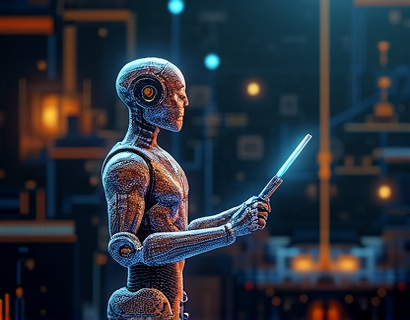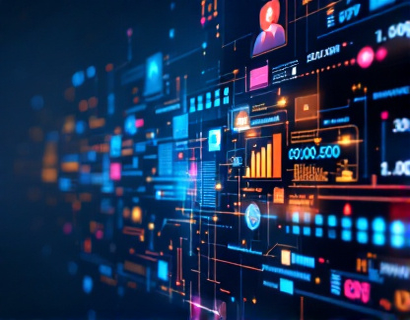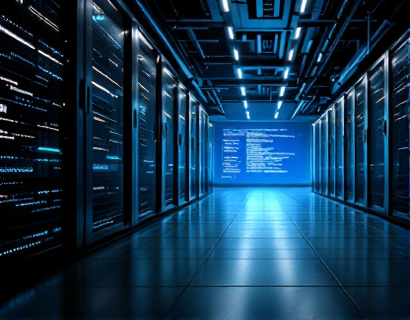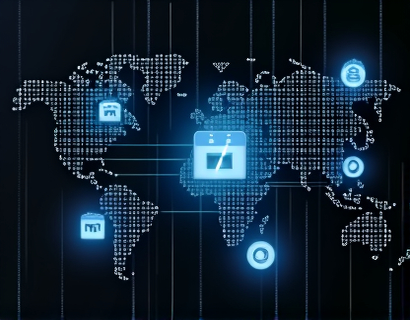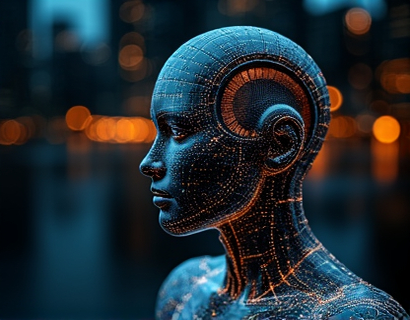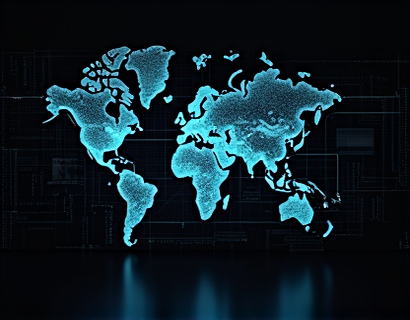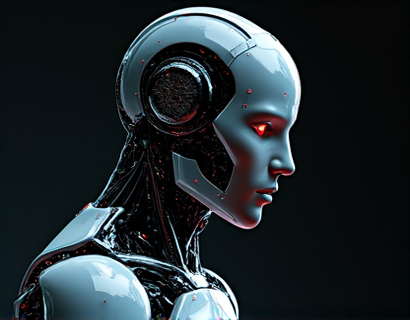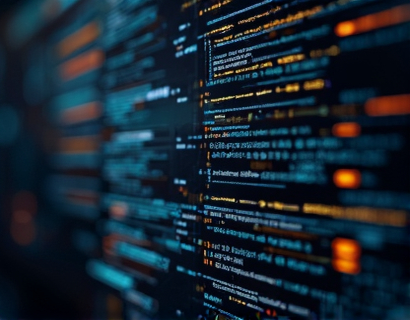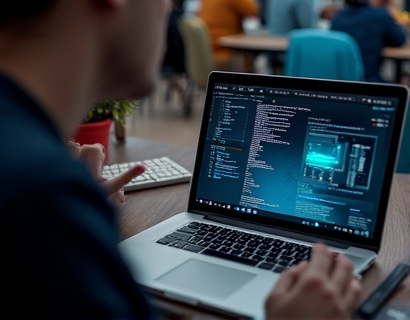Decentralized Productivity 2025: Maximizing Business Potential with AI and Crypto Synergy
The landscape of business productivity is undergoing a transformative shift, driven by the synergy between artificial intelligence (AI) and cryptocurrency. This convergence is giving rise to a new era of decentralized solutions that promise to revolutionize how businesses operate, connect, and innovate. In 2025, tech leaders and early adopters have the opportunity to harness this synergy through advanced platforms that integrate AI and crypto, offering unprecedented tools to enhance productivity and connectivity.
The foundation of this revolution lies in the unique properties of blockchain technology, which underpins cryptocurrency. Blockchain's decentralized nature ensures transparency, security, and immutability, making it an ideal framework for building trust and efficiency in business operations. When combined with AI, which excels in data analysis, automation, and predictive insights, the potential for innovation becomes immense. This article delves into how these technologies, when merged, can create a powerful ecosystem that redefines business productivity.
Understanding the Synergy Between AI and Cryptocurrency
To fully appreciate the impact of decentralized productivity in 2025, it's essential to understand the synergy between AI and cryptocurrency. AI's strength in processing and interpreting vast amounts of data can be significantly enhanced by the secure and transparent ledger provided by blockchain. This combination allows for the creation of decentralized applications (dApps) that can operate without central authorities, reducing friction and increasing trust among users.
One of the key benefits of this synergy is the ability to create decentralized marketplaces where transactions are secure and transparent. Smart contracts, self-executing contracts with the terms directly written into code, can automate and enforce agreements without intermediaries. This not only reduces costs but also speeds up processes, making business operations more efficient and reliable.
Moreover, the decentralized nature of these platforms ensures that data is not controlled by a single entity, mitigating the risks of data breaches and central points of failure. This resilience is crucial in today's digital landscape, where cybersecurity threats are increasingly sophisticated.
Enhancing Productivity with AI-Driven Tools
AI-driven tools are at the forefront of enhancing productivity in various business functions. From automating routine tasks to providing actionable insights, these tools are transforming the way businesses operate. In a decentralized environment, these tools can be even more potent, as they can leverage the collective intelligence and data from a network of users.
For instance, AI-powered project management tools can optimize workflows by predicting bottlenecks and suggesting optimal resource allocation. These tools can integrate with blockchain-based systems to ensure that all team members have access to the most up-to-date and accurate information, fostering better collaboration and decision-making.
Another area where AI shines is in customer service. Chatbots and virtual assistants can handle a wide range of customer inquiries, freeing up human resources for more complex tasks. In a decentralized setup, these AI assistants can be deployed across multiple platforms and jurisdictions, ensuring consistent and high-quality service without the need for centralized oversight.
Connectivity and Network Effects
The decentralized nature of these platforms fosters strong network effects, where the value of the platform increases as more users join. This is particularly beneficial for businesses looking to expand their reach and connect with a global audience. The interconnectedness of the network ensures that users can seamlessly collaborate and share resources, breaking down geographical and organizational barriers.
Furthermore, the use of cryptocurrencies within these platforms facilitates smooth and secure transactions, eliminating the need for traditional banking systems. This not only reduces transaction costs but also accelerates the flow of funds, enabling businesses to operate more efficiently.
Take, for example, decentralized finance (DeFi) applications that offer lending, borrowing, and trading services. These applications can be integrated into productivity platforms, allowing businesses to manage their finances more effectively and access capital markets directly. This level of financial autonomy and flexibility is a game-changer for modern businesses.
Case Studies and Real-World Applications
Several companies have already begun to leverage the synergy between AI and cryptocurrency to enhance their productivity and connectivity. One notable example is a software development firm that implemented an AI-powered code review tool on a blockchain-based platform. This tool not only automates the review process but also ensures that all feedback and changes are recorded on an immutable ledger, enhancing transparency and accountability.
Another case involves a global supply chain company that used a decentralized tracking system powered by AI and blockchain. The system provided real-time visibility into the movement of goods, reducing delays and improving inventory management. The use of smart contracts ensured that all parties adhered to the agreed terms, reducing disputes and increasing trust among partners.
These examples demonstrate the practical benefits of integrating AI and cryptocurrency in business operations. By adopting such technologies, companies can gain a competitive edge, streamline processes, and build more resilient and transparent business models.
Challenges and Considerations
While the potential benefits are significant, there are also challenges and considerations that businesses must address when exploring decentralized productivity solutions. One of the primary concerns is the regulatory landscape, as the use of cryptocurrencies and blockchain technology is still evolving and varies across jurisdictions. Companies must navigate these regulations carefully to ensure compliance and avoid legal pitfalls.
Another challenge is the technical complexity involved in integrating AI and blockchain systems. Businesses need to invest in skilled personnel or partner with technology providers who can help bridge the gap between these advanced technologies. Additionally, there is a learning curve associated with adopting new tools and processes, which requires a commitment to continuous education and adaptation.
Security remains a critical concern, despite the inherent benefits of decentralized systems. While blockchain is secure by design, the interfaces and applications built on top of it can still be vulnerable to attacks. Businesses must implement robust security measures and stay vigilant to protect their systems and data.
Future Outlook and Opportunities
Looking ahead, the integration of AI and cryptocurrency in business productivity is poised for significant growth. As more companies recognize the value of decentralized solutions, we can expect to see increased innovation and adoption. The development of more user-friendly platforms and tools will make these technologies accessible to a broader range of businesses, further accelerating the transformation.
The rise of Web 3.0, a decentralized internet powered by blockchain, will play a crucial role in this evolution. Web 3.0 promises to create a more open, secure, and user-controlled web, where decentralized applications and services thrive. AI will be a key enabler in this new web, providing intelligent and personalized experiences for users.
For tech leaders and early adopters, the opportunities are vast. By embracing this synergy, businesses can not only enhance their internal operations but also create new value propositions for their customers. The ability to offer decentralized, AI-driven solutions will set these companies apart in a competitive market, driving growth and innovation.
In conclusion, the convergence of AI and cryptocurrency is paving the way for a new era of decentralized productivity. By leveraging the strengths of both technologies, businesses can unlock unprecedented levels of efficiency, transparency, and connectivity. As the landscape continues to evolve, those who embrace this synergy will be well-positioned to thrive in the digital age.







